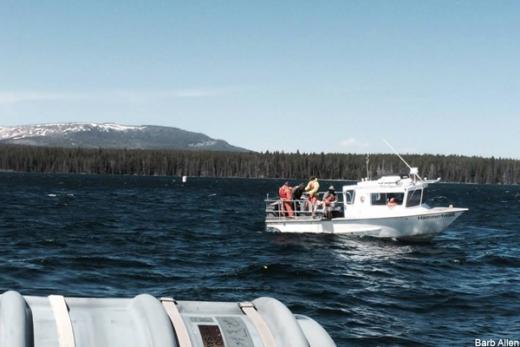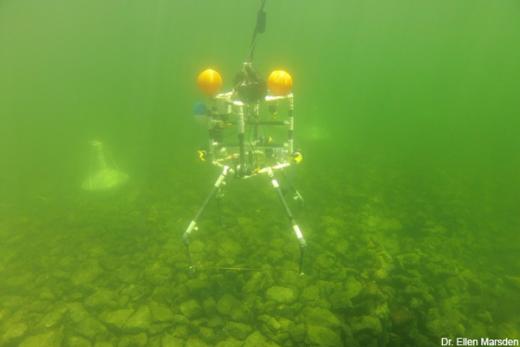Yellowstone Lake Project
Yellowstone Lake and the upper Yellowstone River and its tributaries once teemed with incredible numbers of native Yellowstone cutthroat trout and was the largest Yellowstone cutthroat fishery in the world. Then in the mid 1990s, non-native lake trout were discovered in the Lake. A tremendously predatory fish, they had an incredible impact on the Yellowstone cutthroat population, reducing it to less than 5-10% of historic averages. As a keystone species of the ecosystem – these cutthroats are a food source for as many as 40 birds and land-based animal species, including bald eagles and bears – this represented a great loss to the entire ecosystem and to the Wyoming economy. Tourism related to the cutthroat fishery was estimated to generate nearly $10 million a year when healthy.
An effort to restore this iconic Yellowstone cutthroat population has been underway since 2007, led by Yellowstone National Park with the help of partners and volunteers including Wyoming Trout Unlimited and the East Yellowstone and Jackson Hole – and with broad support from anglers, conservationists, researchers, sportsmen and women, outfitters, and agency staff from across the region and nation.
A Wyoming Wildlife and Natural Resources Trust grant awarded in 2014 for approximately ¾ million dollars, secured by Wyoming Trout Unlimited, has enabled this work to proceed. Initial recovery efforts focused on netting and removing lake trout from the system, while newer efforts supported by the WWNRT grant have been focused on identifying lake trout movement corridors and spawning areas so that they can be targeted with newly developed technology to kill eggs and larval fish – a strategy put forth by a consortium of fisheries scientists.
The "Nimble Dancer" remote operated vehicle on a Carrington Island spawning bed sampling for lake trout fry
We're happy to say that the effort is working. All available data point to lake trout numbers decreasing and Yellowstone cutthroat numbers starting to rebound. Distribution netting performed every August to get a measure of the cutthroat population has been completed for 2014, and again the numbers are up. For the third year in a row, we are not only seeing more cutthroats (three times the number seen in 2010) but even more importantly, the number of surviving juvenile and mid-age classes of fish are way up (as many as 10 times the number seen in 2010). The increase in cutthroats is due to increased lake trout netting success, which is partially informed by TU-funded telemetry research. Meanwhile, the population of lake trout continues to decline and its age structure has shifted to more small fish. This is great news for the future of this fishery and ecosystem – and anglers who have ventured to Yellowstone over the summer have also reported signs of a cutthroat comeback.
Find out more about the Yellowstone Lake Project on the Wyoming Trout Unlimited website.


